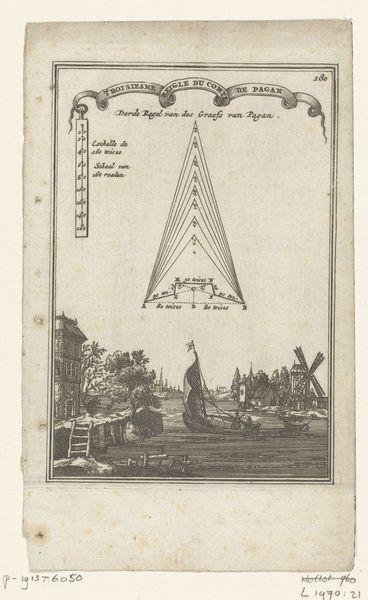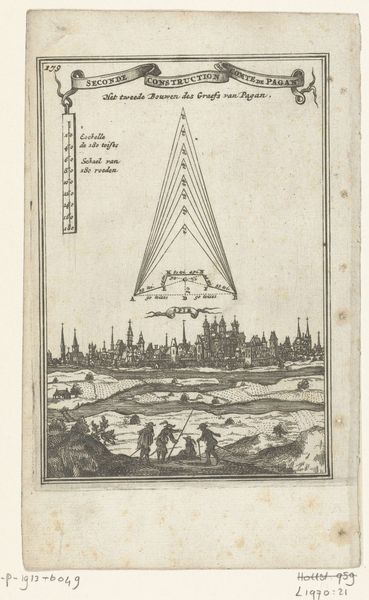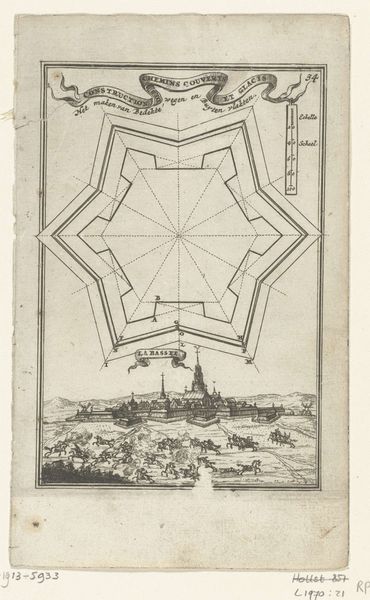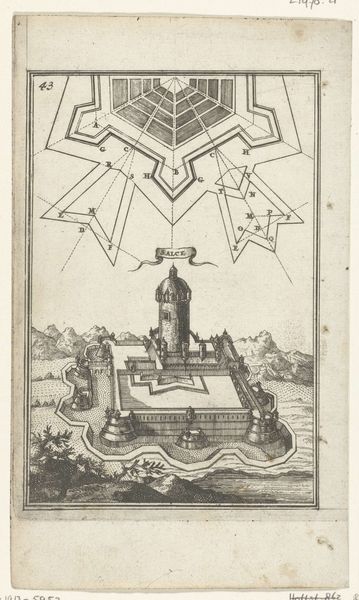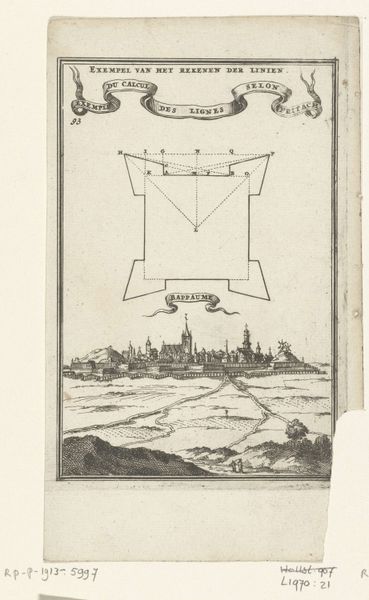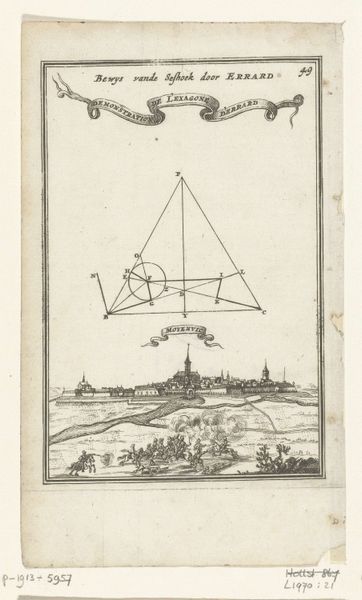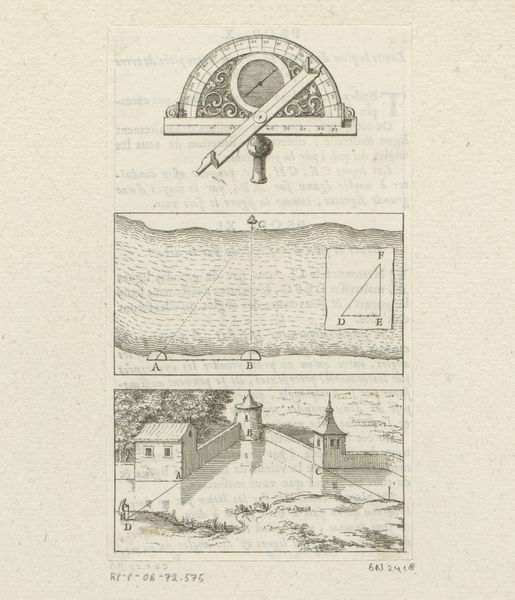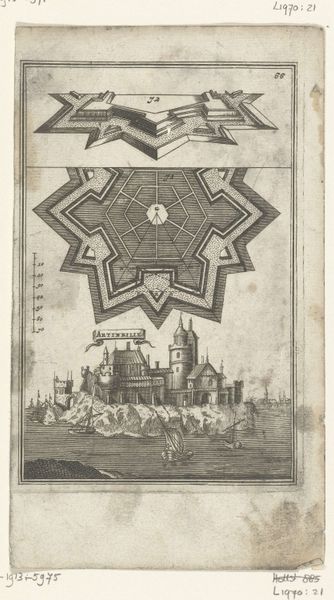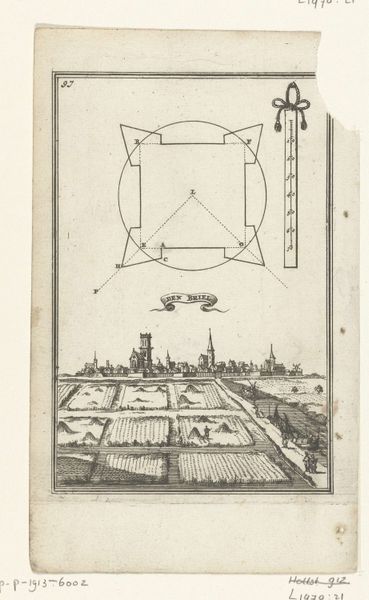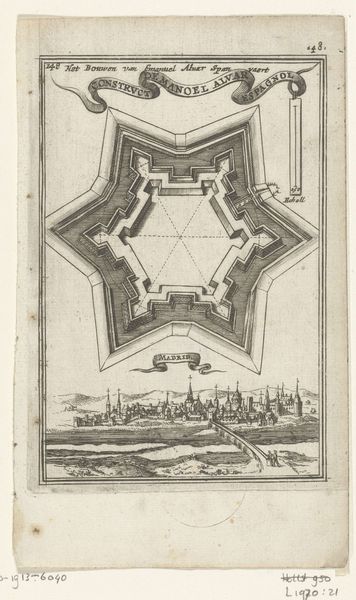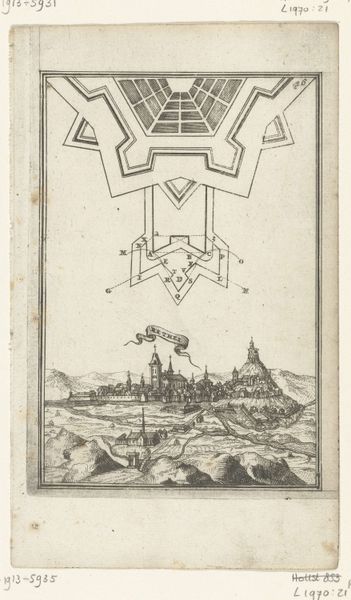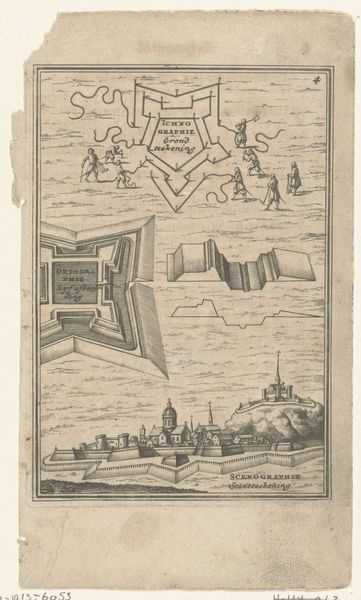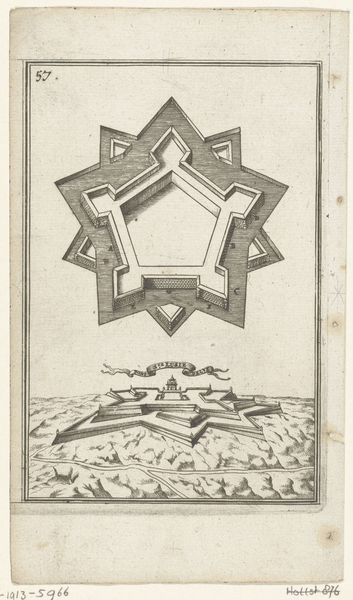
Illustratie voor 'Den Arbeid van Mars' van Allain Manesson Mallet 1672
0:00
0:00
drawing, print, paper, ink, engraving
#
drawing
#
baroque
# print
#
landscape
#
paper
#
ink
#
history-painting
#
engraving
Dimensions: height 185 mm, width 112 mm
Copyright: Rijks Museum: Open Domain
Curator: Here we have an engraving by Romeyn de Hooghe, created in 1672. It’s titled "Illustratie voor 'Den Arbeid van Mars' van Allain Manesson Mallet" - that's “Illustration for 'The Labors of Mars' by Allain Manesson Mallet.” Editor: My immediate impression is one of layers – not only the lines in the drawing but also layers of intent. The stark contrast of ink on paper and the detail suggests both a technical drawing and something almost…fantastical. Curator: Absolutely. As an illustration for a book on military engineering, it would have needed to clearly demonstrate fortification principles, yet we see symbols threaded through. Note how the banner proclaiming 'The Labors of Mars' ties it explicitly to warfare and myth. Editor: That’s fascinating. To me, this really emphasizes that the material conditions of war are being filtered through mythology and classicism. The image feels almost propagandistic despite the subject matter—all that labor supporting these grand, fortified structures. What kind of paper and ink was available would have deeply informed de Hooghe’s approach. Curator: It is so telling, this intertwining of myth and methodology. The choice to depict it as an engraving reflects a desire to make it accessible and reproducible, suggesting a wide audience engaged with martial affairs. These symbols and illustrations acted as both instructional and mnemonic devices, reinforcing cultural assumptions about the glories and demands of warfare. Editor: Mnemonic indeed, but more than that. Looking at the fortifications below, there's also an aspiration being captured. An ideal rendered permanent in ink. Did de Hooghe mix his own inks? I wonder about the recipes he employed for these lines, so durable through the ages. It speaks to the materiality, and, honestly, the intense labor put into its production. Curator: The enduring impact and legibility through symbols is truly powerful. Seeing it today offers a profound window into 17th century attitudes towards knowledge, warfare and cultural memory. Editor: And a deep sense of the embodied knowledge inherent in the creation of this document: the work involved, from sourcing the paper and mixing ink, through the engraver's deliberate hand. Thanks to this lens, "The Labors of Mars” now reads completely differently for me.
Comments
No comments
Be the first to comment and join the conversation on the ultimate creative platform.
